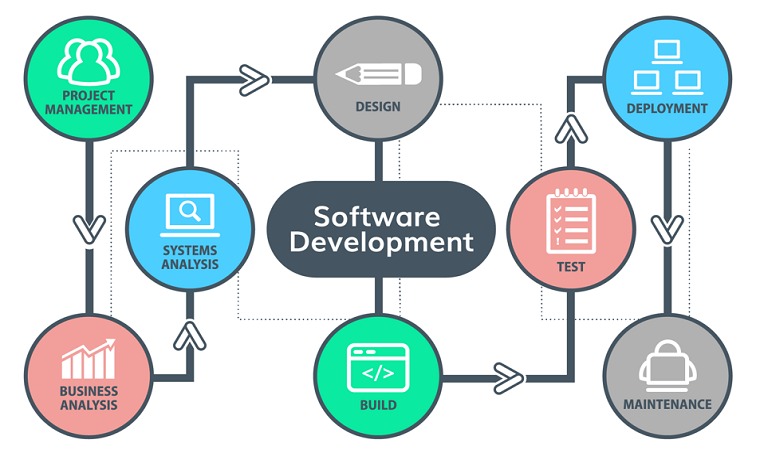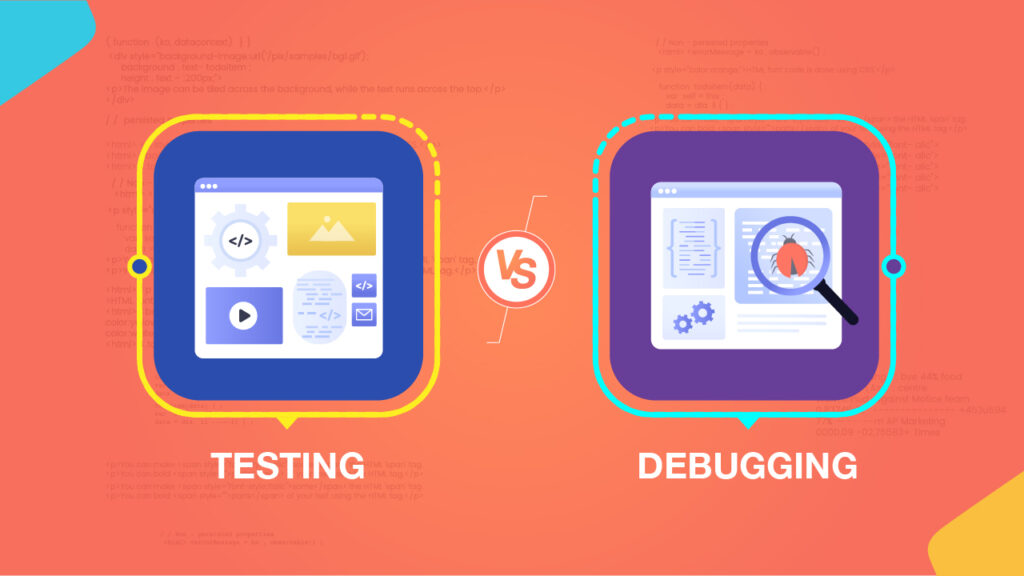Software Development Stages
This stage is a crucial step in bringing software projects to life. Software development involves designing and writing code to create programs that meet specific needs. Additionally, when exploring the stages of software development, key steps include identifying requirements, coding and testing the software, and implementing it for practical use.

Why are Software Development Principles Important?
Software development phases and principles are important because they provide guidelines for writing high quality, maintainable code. Following the principles helps to ensure that code is easier to understand, modify and debug, which saves time and reduces the risk of errors occurring.
Guidelines can also help improve collaboration between developers because they provide a common language and framework for discussing software design and architecture. By following the principles, developers can work more efficiently and effectively, and produce higher quality code.
In addition, policies help create a consistent coding style that makes it easier for developers to read and understand code. This is especially important when working on larger codebases or collaborating on projects with other developers.
By designing code with principles like SOLID and KISS in mind, developers can create software that is flexible and can be easily changed and improved over time.
What are the Development Stages?
Software development consists of steps where programmers create a program using one or more programming languages. This program can meet corporate or organizational goals. However, learn the steps of the software development process:

1. Identification of Needs
At this stage, we conduct market research and thoroughly evaluate opinions and reflections about the work. Before producing software, a company must perform extensive research to confirm the product’s acceptability. Developers need to describe their software services in a way that ensures the target audience finds them useful and functional. We gather this information from potential customers’ feedback, surveys, user comments on various platforms, and competitors’ markets.
2. Needs Analysis
At this stage, stakeholders discuss and settle on the product’s technical specifications. They finalize the details of each part to guarantee a quality product. For example, they decide which language the product should use to reach a broader community—monolingual or multilingual—and select the technologies to implement.
The developer, user, tester, project manager, and quality control team work together in this phase. Programmers actively develop the software.
3. Method Selection
A framework now needs to be defined so that the software development steps can be carried out in that format. Teams choose from a variety of methods. Rapid software development (RAD), agile, waterfall, development operations (DevOps) and scalable agile framework (SAFe) are among the methods available. For details, you can review our related article here.
4. Design Development
Designers and developers draw the specific specifications needed to create software. At this stage, many things are checked to draw the product. Designers and developers examine factors such as user interface (UX) and design (UI), project requirements, programming structure and many more factors to design and deliver the product to the customer. Stakeholders discuss factors such as time, budget, team structure, applicable technologies, initial and final project goals, schedule, project constraints, methodology and architectural design. For details, you can check our article “Frontend, Backend and Design Together”.
5. Development and Implementation
Developers code according to the product specifications and requirements approved in the previous steps. Developers develop the front-end interface. Developers test and debug each other’s code and test the product for compliance with requirements.
6. Test
Now, the expert tests the product for bugs and coordination between the requirements and the product and presents these items to the developers. If the developer approves, they make changes to the program and send it to the expert for review. The expert repeats the testing process until the software runs without errors and meets the requirements.

7. Software distribution
When there are no problems with the software, it will be provided to the customer. After the delivery of the first version, the IT software development company prepares the team to investigate the problems the user has experienced while working with the product. If the problems are minor, they will be fixed and the software will be updated. But if the software fails, more extensive changes will be needed.



Pingback: What is Redis? Fast and Reliable Data Storage Solution - Codinic